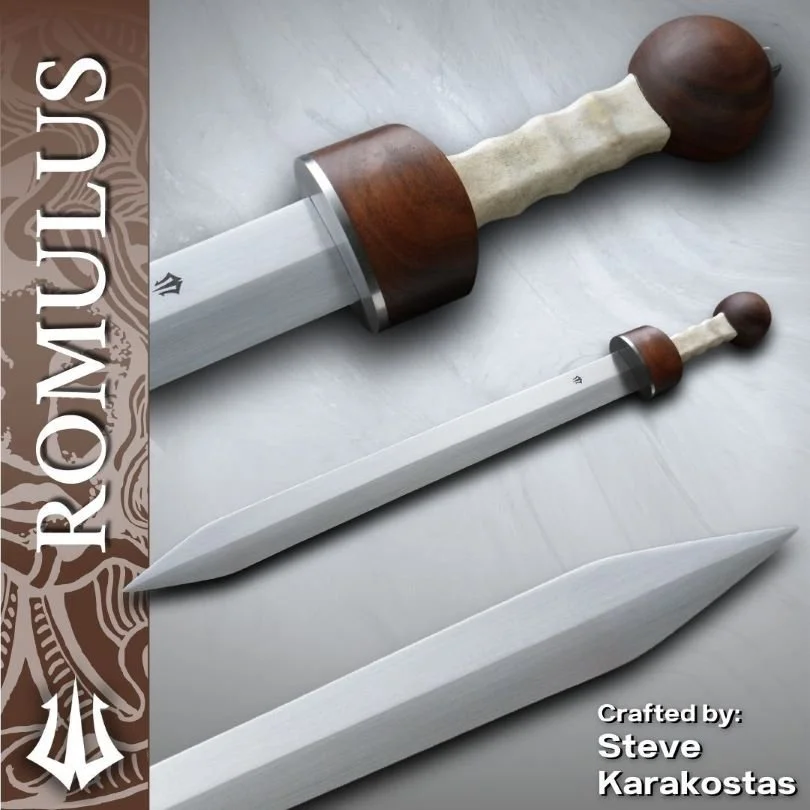“ROMULUS”
Roman Gladius
Pompeii Style

Roman Gladius
Pompeii Style

Overall Length
28.5”
Blade Length
20.25”
Wood
Walnut
Grip
Elk Antler
Material
5160 Steel
Thickness
0.202
Width
1.8”
Point of Balance
2.5” from Guard
Total Weight
1lb 11oz
Stabbing was the primary method of attack, though they were excellent for cutting if the opportunity arose. A well-timed stab would penetrate armour and deliver a fatal wound.
The sword was relatively light, designed to quickly strike and recover. Roman soldiers using this Pompeii style of Gladius would generally fight in line formation.
The ancient Roman town of Pompeii was a thriving village that was horrifically covered by volcanic ash in 79AD.
Mount Vesuvius, a nearby volcano, erupted violently. It spewed hot ash and molten rock at over 1.5 MILLION tons per second!
It was one of the deadliest eruptions in recorded history, sending a pyroclastic surge directly at Pompeii. Thousands of villagers were covered in an instant. Ghostly forms of the villagers’ bodies are preserved to this day.

4 spectacular Roman Gladius swords were excavated from the ruins of Pompeii. They all had a similar style - wooden handle made of holly, with parallel cutting edges and a triangular point. Designed for speed, stabbing, and thrusting, this style of Gladius had a shorter and harder point.
The Romulus is a Roman Solider Gladius Sword Replica with a modern take on the handle, as I used elk antler instead of holly wood.

Roman fighting tactics used against the Gauls in 4 BC were recorded by the Greek historian Dionysus of Halicarnassus.
“On the other hand, the Romans' defence and counter-manoeuvring against the barbarians was steadfast and afforded great safety.
For while their foes were still raising their swords aloft, they would duck under their arms, holding up their shields, and then, stooping and crouching low, they would render vain and useless the blows of the others, which were aimed too high, while for their own part, holding their swords straight out, they would strike their opponents in the groins, pierce their sides, and drive their blows through their breasts into their vitals.
And if they saw any of them keeping these parts of their bodies protected, they would cut the tendons of their knees or ankles and topple them to the ground roaring and biting their shields and uttering cries resembling the howling of wild beasts.”
